Canning Baked Beans or Pork and Beans
This post may contain affiliate links. See my disclosure policy.
Canning baked beans gives you the convenience of being able to enjoy homemade right off the shelf! Just open the jar, heat it up, and enjoy! And unlike store-bought canned baked beans, this doesn’t have any of the junk ingredients. Canned in a pressure canner, your baked beans or pork and beans will keep for up to a year.
Be sure to also try our Homemade Canned Chili Con Carne!
Pressure canning can definitely be an intimidating thing for anyone who has never tried it, but once you get the hang of it there’s really nothing to it. And a large canner holds quite a bit, so I like to make a large batch so that I can have multiple jars of these homemade canned baked beans on hand. Canning baked beans is easy and is a satisfying accomplishment!
Don’t worry if the consistency of your baked beans is soupy after cooking them, the beans will continue to absorb the liquid after going through the pressure canning process and sitting in the jars for a few days.
If you prefer canning Pork and Beans” instead, which very similar but with a little less sugar and generally no molasses, simply reduce the amount of brown sugar to a 1/4-1/3 cup and either eliminate or only add a little molasses. You still have the option of cooking the beans on the stove or baking in the oven.
Canning Baked Beans Recipe
Let’s get started!
Rinse the beans and rapidly boil them in unsalted water for 2 minutes. Then turn off the heat, cover and let soak for 1 hour. Drain and discard the liquid. Return the beans to the pot with 6.75 quarts of water and bring to a boil, the immediately drain again – this time reserving the liquid. Set aside the beans and liquid.
In a very large stock pot (at least a 10-quart pot) fry the bacon until crispy then drain the fat. Draining the fat is essential for the bottles to seal when you pressure can them.
Add the onions and cook until soft and translucent. Add the garlic and cook for another couple of minutes.
Add all remaining ingredients, including the beans and their liquid.
You have two options for cooking the beans: 1) Cover and bake at 350 degrees F for 3-4 hours, stirring once or twice. If needed, add a little water while cooking to keep the beans “soupy”. (Be sure to use an oven-safe lid or cover tightly with foil), or 2) Cover and simmer on low-medium on the stovetop for 60-90 minutes or until the beans are soft (depending on how old the beans are they may require longer). Keep in mind though that the beans will continue to cook in the pressure canner so don’t let them get mushy.
I recommend at least a 10 quart stock pot. Mine was 8 quarts and as you can see it’s nearly filled to the brim!
Pack into hot, sterilized canning jars leaving 1 inch of head space and cover jars with seals and rims. Follow your canner’s instructions and process at 10 lbs pressure: Quart jars for 75 minutes, pint jars for 65 minutes. (Adjust for altitude as needed.) I’m using my Presto 23-quart Pressure Canner and Cookerwhich is still going strong after several years.
Per your canner’s instructions, remove pressure canner from heat and allow the pressure to release on its own. Remove jars and place them on a kitchen towel on the counter top and let them sit undisturbed for 24 hours. Jars are sealed when the jar lids are depressed.
For best storage, store in a dark and relatively cool place (though room temperature is fine). Shelf life is at least 1 year.
Save This Recipe
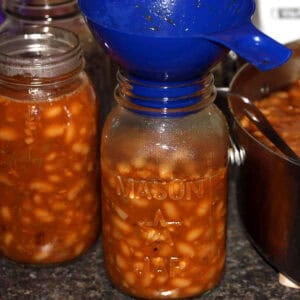
Canning Baked Beans or Pork and Beans
Ingredients
- 3 pounds dried navy or white beans
- 3/4 cup molasses
- 1/4 cup apple cider vinegar
- 3 tablespoons kosher salt
- 2 tablespoons ground dry mustard
- 1/2 cup ketchup
- 1 cup brown sugar
- 3 large yellow onions , chopped
- 2 tablespoons Worcestershire sauce
- 1 teaspoon black pepper
- 1 1/2 pounds bacon , diced
- 3 bay leaves
- 5 cloves garlic , minced
- 1/2 teaspoon ground cloves
Instructions
- Rinse the beans and rapidly boil them in unsalted water for 2 minutes. Then turn off the heat, cover and let soak for 1 hour. Drain and discard the liquid. Return the beans to the pot with 6.75 quarts of water and bring to a boil, then immediately drain again - this time reserving the liquid. Set aside the beans and liquid.
- In a very large stock pot (at least a 10-quart pot) fry the bacon until crispy then drain the fat. Draining the fat is essential for the bottles to seal when you pressure can them. Add the onions and cook until soft and translucent. Add the garlic and cook for another couple of minutes. Add all remaining ingredients, including the beans and their liquid.
- You have two options for cooking the beans: 1) Cover and bake at 350 degrees F for 3-4 hours, stirring once or twice. If needed, add a little water while cooking to keep the beans "soupy". (Be sure to use an oven-safe lid or cover tightly with foil), or 2) Cover and simmer on low-medium on the stovetop for 60-90 minutes or until the beans are soft (depending on how old the beans are they may require longer). Keep in mind though that the beans will continue to cook in the pressure canner so don't let them get mushy.
- Pack into hot, sterilized canning jars leaving 1 inch of head space and cover jars with seals and rims. Follow your pressure canner's instructions and process at 10 lbs pressure: Quart jars for 75 minutes, pint jars for 65 minutes. (Adjust for altitude as needed.)Per your canner's instructions, remove pressure canner from heat and allow the pressure to release on its own. Remove jars and place them on a kitchen towel on the counter top and let them sit undisturbed for 24 hours. Jars are sealed when the jar lids are depressed.Note: the consistency may be soupy initially but the beans will continue to soak up liquid as they sit.
- For best storage, store in a dark and relatively cool place (though room temperature is fine). Shelf life is at least 1 year.Makes about 7 1/2 quarts or 15 pints.
Notes
Nutrition

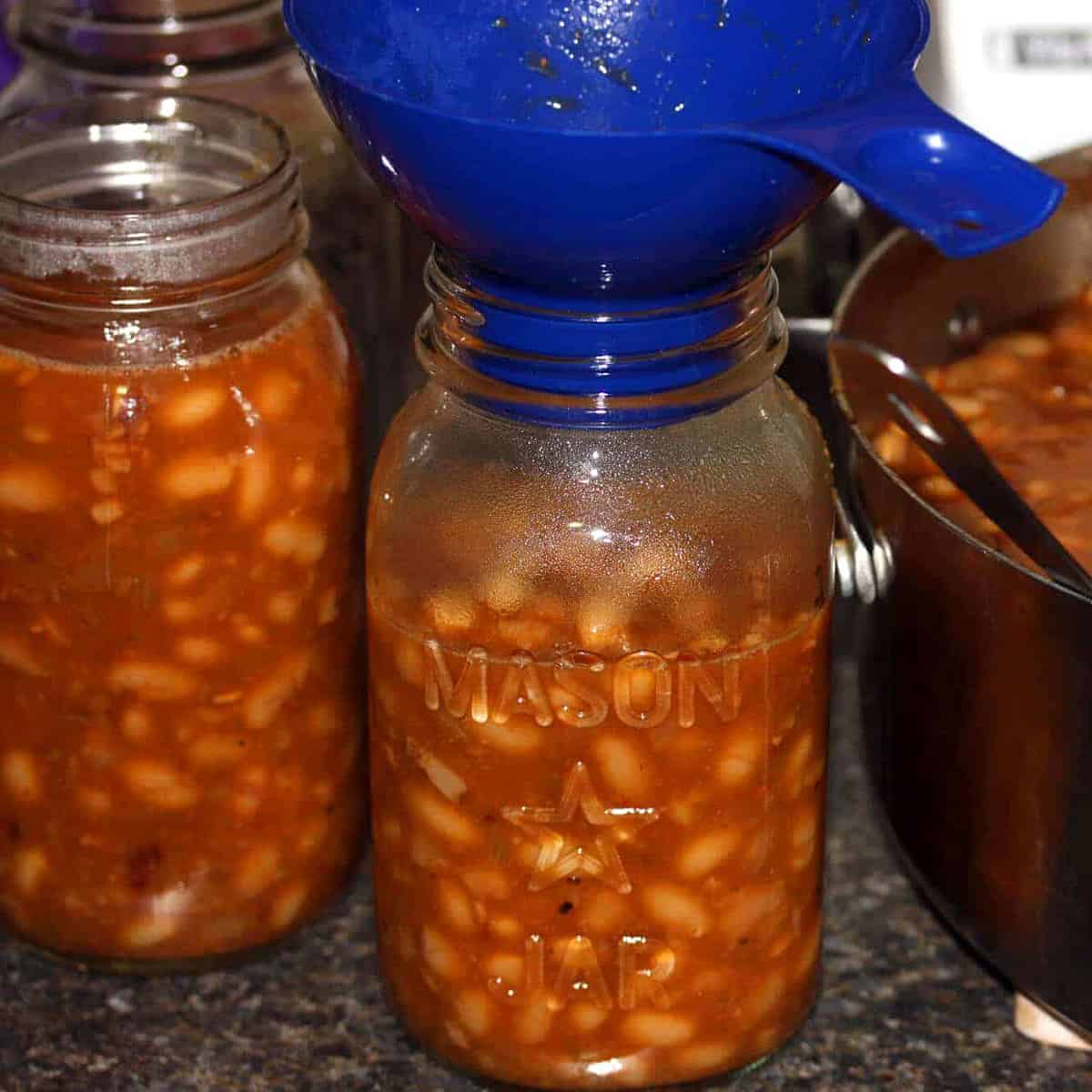
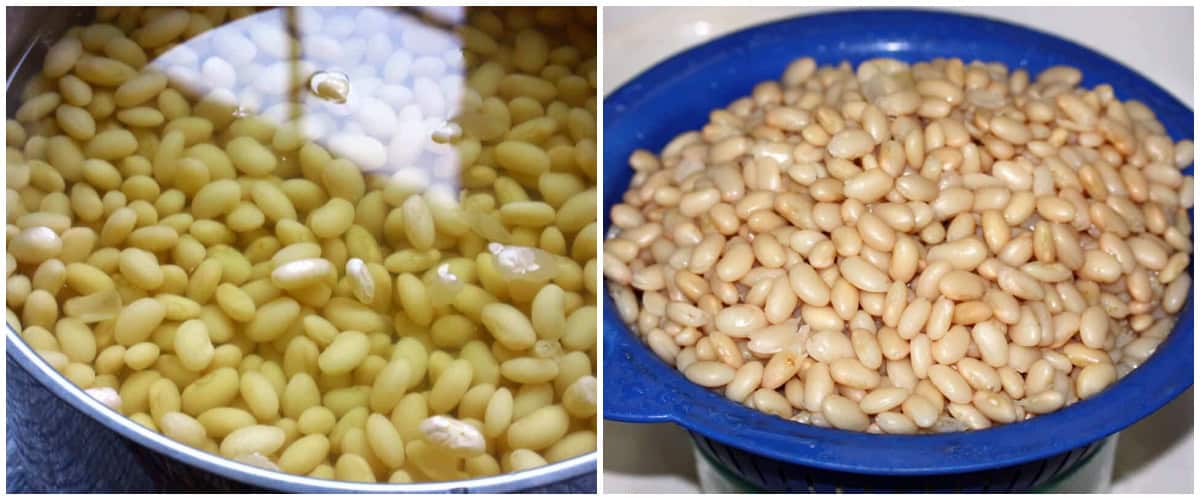
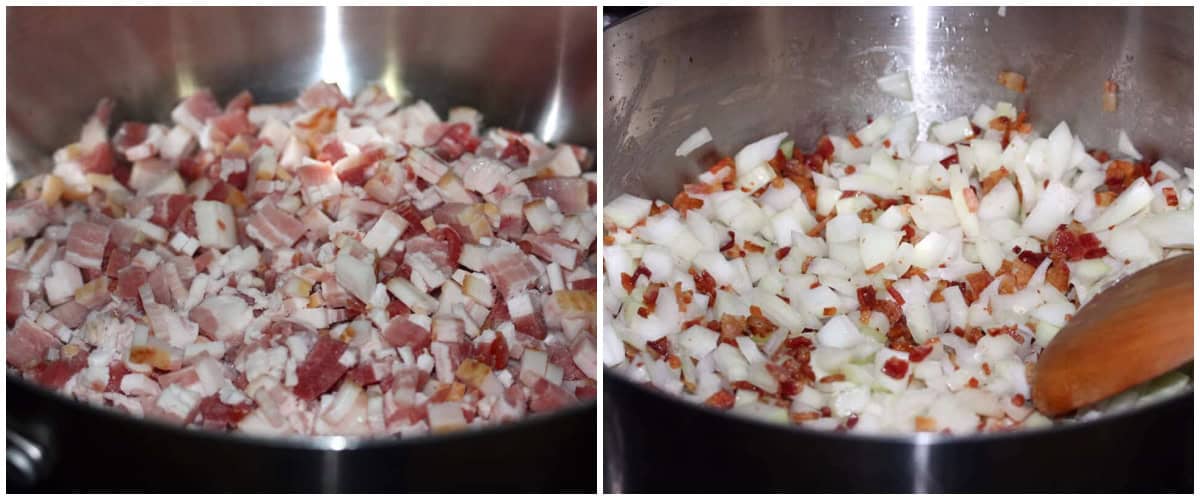
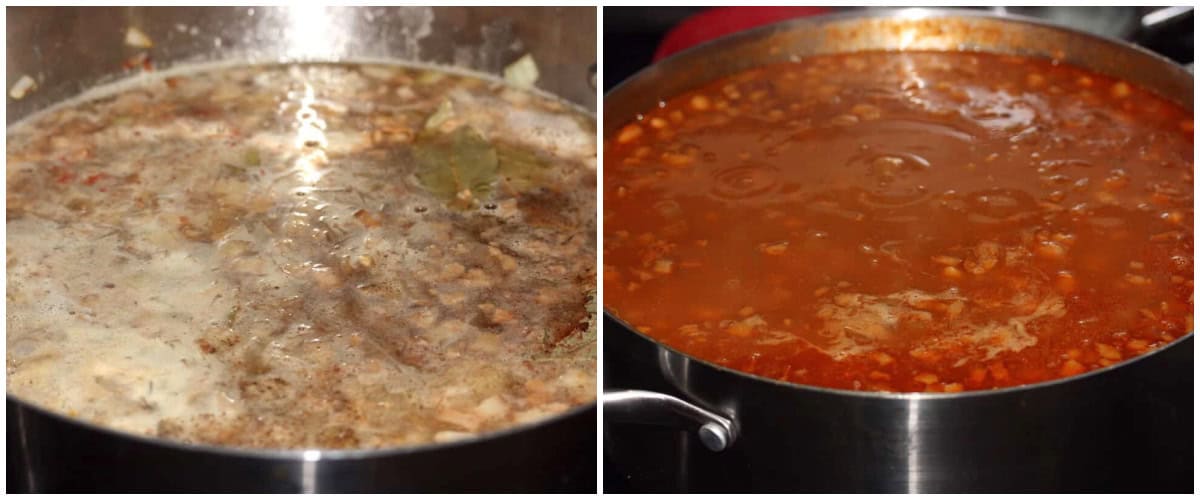


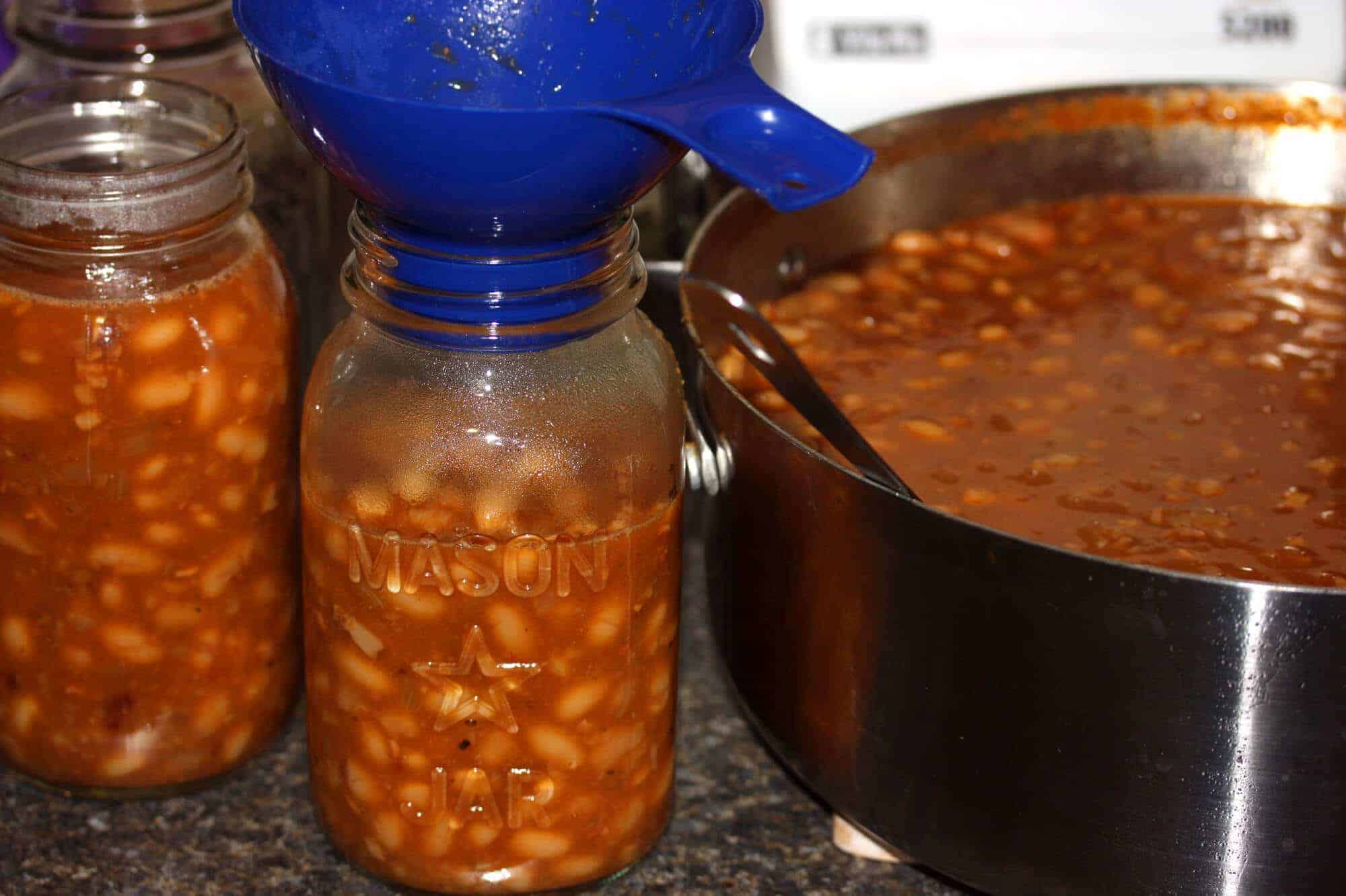


















How can I can them without a pressure canner?
Hi Caroline, you can’t unfortunately. In order for the soup to be safely canned it requires a pressure canner.
Can I use yellow eye beans instead of navy or white beans if I plan to can them?
Hi Rachel, yes you can. Happy cooking!
I want to open up canned baked beans from the store and then add sausage that I have precooked. Then I want to mix them. Then pressure can them according to the guide to can meat. Do I have to add more liquid or can I leave it thick?
6.75 is way too much liquid. I only filled my jars 2/3 full with beans and still had a ton of liquid left over. Because of this the flavors were muted because there was too much water. The end result didn’t produce a nice thick sweet sauce. It was like bean soup after the canning process was complete. :(
I am making this recipe today and I want to know if I can use Turkey bacon? Also- Did you cook your beans the oven or stovetop method? I also saw comments on the amount of liquid- Is the 6.75 quarts correct?
Hi Diana, yes, you can use turkey bacon and yes, 6.75 quarts is correct. I used the stovetop method for this. Happy cooking!
I’m very interested in trying this recipe. I was wondering if I could substitute fatback for the bacon. I have so much fatback in my freezer and need to use it up.
Hi Tammie, yes you can. Happy cooking!
This is the second time I’ve made canned beans (I call them Baked Boston Beans in a jar). No meat. I found that the first time I did this type of beans, similar to the above recipe, that my jars had beans exposed with no sauce on them at the top after a few days of being in the pantry. This time, I filled the jars just a little past half way with beans, and then filled with the sauce/juice 1″ below the top. The beans continue to soak up the sauce/juice while being pressured cooked so now my beans are not exposed. Hope my little tid bit helps :)
Can you use relish?
Can I use pinto beans instead?
I want to do baked bean in water bathe how long to i process them fot
Hi Donna, the water bath method is not safe for canning beans, you will need to use a pressure canner.
I love the recipe but i too had problems with the liquid as mine needed to cook for so long and still watery. I am going to try to reduce the liquid to the pints instead of quarts and see how that turns out. Thanks for posting your comments, they help me a lot.
Hi Patricia, the beans will still be watery after they’re cooked and prior to pressure canning and that is because the beans aren’t fully cooked at that point. During the pressure canning process the beans will continue to absorb liquid and then after they’ve rested a while they will absorb yet more.
OK thanks good to know. I was wondering about that..
My beans are out of the canner and they turned out super dry! I followed directions to a T!
I’ve been canning for 50 years. I liked the sound of this recipe. I never used cloves in my BB but really liked the flavor it adds. The liquid in the recipe sounded way off. I never use bean water due to the lectin so instead I used 3 qts chicken broth and 1 qt tomato juice (total 4 quarts NOT 6.75 per the recipe). I cut the sugar in half and added a Tbs of bouillon (any flavor you have on hand) for added flavor, 1/2 tsp liquid smoke and 1 tsp Kitchen Bouquet. I did not do the stove/oven cook, no need, beans cook fully after the quick soak during the canning process. I made the sauce omitting the bacon and onions and cooked it for 30 minutes. Don’t forget to remove the bay leaves. In each pint jar I added 2 packed Tbs of diced onion and a chunk of uncooked bacon. No need to fry and drain, bacon fat is pure flavor and every jar sealed. (I’ve found adding bacon/onions to a liquid not every jar gets it’s share of the solids no matter how much I stir the sauce so I add the same amount of onion and bacon to each jar before filling with beans) I then filled each jar 2/3 full of the quick soaked beans and ladled in the sauce to 1 inch of the top of the jar, de-bubble, adjust liquid. The jars are a rich color and flavor, a tad soupy but it’s a thicker than the liquid was. Empty a jar into a pan and it’s nice and thick in a few minutes.
I used David’s suggestions on the recipe and it turned out fantastic! The best of both the recipe and the tweaks and you have a winner. Most people don’t realize the freshness of the beans can have a drastic effect on the outcome as to being too thin or thick. Also, I live in Phoenix so most dry goods cook differently here than in other places I’ve lived. Anyway, thanks David and Kimberly!
My beans look nothing like the photo shown. I understand that the beans continue to cook during processing but if this is really your stock pot then sometime way off in the recipe. How did you get the thick sauce shown and that color with just a little ketchup? It all tastes fine at this pre-canned stage but I have a sinking feeling that these are going to be very “soupy”.
Hi Candace, the lighting was poor when I took these pictures several years ago but the color of the sauce is still pretty accurate – a deep reddish-brown from the molasses, brown sugar and ketchup. Did you beans thicken up after processing?
Instead of bacon can I use ground beef? and how long can I store it for if canning in pressure canner?
Hi Katty, I have not tested this with ground beef, perhaps one of our readers can chime in.
Yes, it gets treated as if it was Chili. Pints 10lbs at 75 minutes, Quarts, 10 lbs at 90 minutes